Seasons – Spring 2013

Dear friends of Plateau,
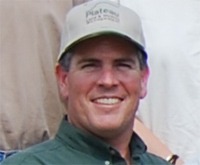
Director of Sales, Tim Milligan
Spring is upon us, and with it, another great issue of Seasons. This Seasons is filled with helpful information on timely topics, shared by Plateau folks, to help you in the ever-changing journey of land stewardship. There are lots of great articles, a radio interview, videos on a wide array of topics, and introductions of the latest folks to join the Plateau team.
Here’s a glimpse of what you’ll find in this Seasons: Account Manager Craig Bowen in a radio interview with Texas Wildlife Association president, Gay Joiner discussing the increasing need for wildlife management as an option for landowners in Ag; Biologist Romey Swanson explains how predators can benefit a healthy ecosystem and how to properly apply a predator control program; Account Manager Kasey Mock appears in a new video discussing the importance of supplemental feeding of white-tailed deer in late winter, early spring; and Business Development Manager Kameron Bain discusses the Wildlife Management Activities Checklist as an invaluable tool for both compliance with County guidelines, and meeting your broader, seasonal land stewardship goals.
There is a lot more just ahead, and I encourage you to take a little time digging into this issue of Seasons. I hope you’ll find what’s inside to be useful, relevant and motivating. We’re always looking to improve, so if you have ideas or comments please don’t hesitate to contact me personally.
Thanks for all you do for your land.
Until next season and Seasons,
Tim Milligan
Director of Sales
Plateau Land & Wildlife Management
(512) 894-3479
[email protected]
Table of Contents
Plateau is Growing!
Introducing: Plateau Webinars on Wildlife Management
The Woods Video Featuring Plateau Co-Founders, David Braun & Beyrl Armstrong
Spring Wildlife Management Activities Checklist
Adventures in Wildlife Management: Nest Boxes
Video Featuring Kasey Mock On Supplemental Feeding White-Tailed Deer
Wildlife Management Activity Highlight: Predator Control
2 TWA Interviews with Gary Joiner Featuring Craig Bowen
Know Your Risk, Save Your Land
Get to Know Plateau
Plateau is Growing!
By Erica Fick, Marketing Coordinator
We have some exciting news to share with you!
For starters, long-time Plateau Account Manager, Tim Milligan has recently been promoted to Director of Sales! Tim started at Plateau as a Field Technician doing brush management and installing nest boxes, worked his way up to Account Manager of the Hill Country South region, and will now be leading the Sales Department.
Tim’s new title means that he will be spending a lot more time in the office, planning strategically for the future growth of Plateau, providing leadership to the rest of the sales team, and overseeing exceptional client service across all departments. In order to fully embody this new role, Tim has lovingly handed over his former service territory, Hill Country South, to Account Managers Craig Bowen and Kasey Mock. Kasey and Craig have also had to re-structure their territories, and thus have been re-assigned some counties the other previously covered.
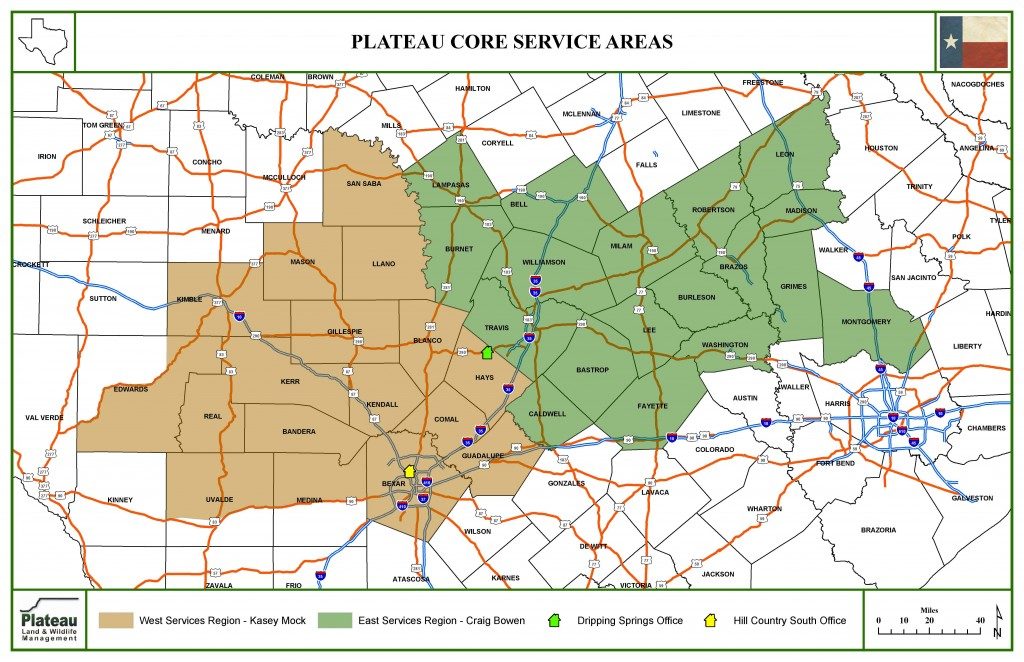
The new Plateau service territories have also been re-named: the East Service Region will be represented by Craig, and the West Service Region will be represented by Kasey.
For some of you, this means that you will have a new Account Manager serving your region. The following is a list of the counties that have been re-assigned due to this restructuring of the new service territories:
 Kasey: Bandera, Bexar, Blanco, Comal, Edwards, Gillespie, Kendall, Kerr, Kimble, Llano, Mason, Medina, Real, San Saba, and Uvalde. To contact Kasey directly, email him at [email protected], or call at 512-787-1849.
Kasey: Bandera, Bexar, Blanco, Comal, Edwards, Gillespie, Kendall, Kerr, Kimble, Llano, Mason, Medina, Real, San Saba, and Uvalde. To contact Kasey directly, email him at [email protected], or call at 512-787-1849.
 Craig: Bastrop, Brazos, Burleson, Caldwell, Fayette, Grimes, Lee, Leon, Madison, Milam, Montgomery, Robertson, Washington. To contact Craig directly, email him at [email protected], or call at 512-571-4305.
Craig: Bastrop, Brazos, Burleson, Caldwell, Fayette, Grimes, Lee, Leon, Madison, Milam, Montgomery, Robertson, Washington. To contact Craig directly, email him at [email protected], or call at 512-571-4305.
We Opened a New Office!
The second piece of news that we’re particularly excited to share with you is that Plateau is growing! We recently opened the new Hill Country South office near San Antonio, which is located at 1951 NW Loop 410, Suite B110 San Antonio, Texas 78213 and pictured in the images below. Though we have been serving this region for some time now, this new office means an added commitment to the growing San Antonio region. Having a greater presence in the area will also allow us to serve you more efficiently.
Leading this new office is Romey Swanson, Senior Plateau Biologist who has been with Plateau for 5 years, but based out of the Dripping Springs office. Joining Romey is new hire, Trenton Meyer, a Plateau Field Technician with a biology degree from Texas A&M. Kasey Mock will also be spending some time in the new office as the region’s Account Manager.
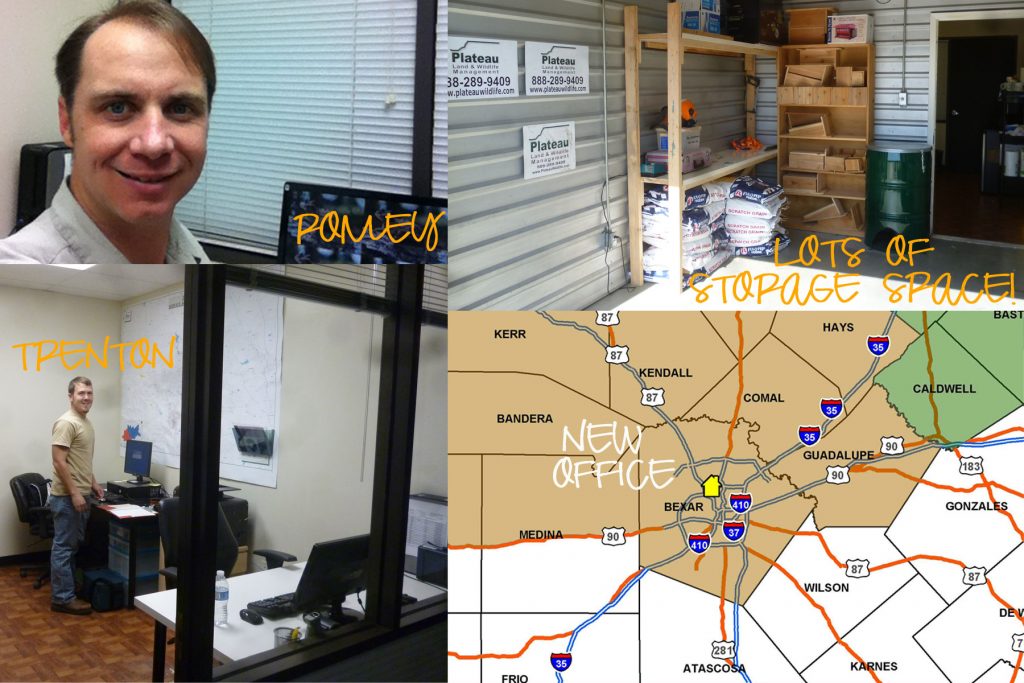
Those of you who have worked with Senior Biologist Shane Kiefer over the past 8 years will want to know that he has also been promoted to Director of Ecological Services and will soon be moving from the San Antonio area to the main office in Dripping Springs. Shane will still be working with landowners throughout our service area but on a more limited basis so that he can focus on improving the products and services we offer.
We promise to continue delivering the same level of service that you’ve expected of us since 1997. We know this growth is in large part because of our loyal clients, and we believe this transition will allow us to better serve you. If you have any questions about these new changes, do not hesitate to call. We’d love to hear from you.
Back to TopBack to Top
Introducing: Plateau Webinars on Wildlife Management
By Erica Fick, Marketing Coordinator
 Did you miss our winter seminars on Wildlife Management? No worries- attend one of our webinars from anywhere! Starting this Friday, we’ll be hosting a webinar every Friday at 10am through April 12th to answer any and all questions you’ve ever had about switching to or maintaining Wildlife Management Valuation (“Wildlife Exemption”).
Did you miss our winter seminars on Wildlife Management? No worries- attend one of our webinars from anywhere! Starting this Friday, we’ll be hosting a webinar every Friday at 10am through April 12th to answer any and all questions you’ve ever had about switching to or maintaining Wildlife Management Valuation (“Wildlife Exemption”).
Some of the topics covered in these informal presentations include:
- Overview of Wildlife Management Tax Valuation (“Wildlife Exemption”)
- The 7 wildlife management activity categories
- Traditional Ag vs. Wildlife…is it right for you?
- State & county requirements
- Concrete answers to concerns that plague many landowners
- How Plateau can help
Visit our webinars page to RSVP and/or to grab the link to our virtual meeting room.
Back to TopBack to Top
The Woods Video Featuring Plateau Co-Founders, David Braun and Beyrl Armstrong
By Erica Fick, Marketing Coordinator
You will enjoy this inspiring video, with cameos by our co-Founders David Braun and Beyrl Armstrong, about The Woods at Millican Reserve, a 400+ acre private development near College Station. Plateau is proud of our partnership with The Woods to create a community of landowners living in harmony with the land. We helped design this residential development that qualifies for Wildlife Management Appraisal and achieves significant property tax savings for the residents. Now we’re helping maintain Wildlife Valuation through a Custom Annual Service Agreement that enhances the beauty and quality of life for the landowners and their families.
The Woods features 30 home sites, each with more than 12 acres per lot, developed with a design aesthetic that prioritizes nature and community by nationally-recognized Lake|Flato Architects. From their website, The Woods is described as:
“Carefully designed to preserve the natural landscape and wildlife while enhancing privacy, a limited number of pristine 12+ acre residential tracts are currently available for reservation. These tracts front on a 150-acre nature preserve reserved for the exclusive use of The Woods landowners.”
Plateau is proud of our role in helping to create the vision for The Woods, and the work we are doing now to shape and maintain the reality of a private enclave of landowners living in harmony with the land. We believe that the future of rural development will be improved by similar projects. The Woods is just the first of many phases being planned in the much larger Millican Reserve project which may eventually grow to a community of a thousand or more families. We at Plateau are actively looking for similar partnerships with residential developers in the future.
Please contact us directly if you’d like to learn more about implementing a Wildlife Management Valuation on a development property. If you’d like more info on The Woods community at Millican Reserve, please visit their website: http://millicanreserve.com/the-woods
Back to TopBack to Top
Spring Wildlife Management Activities Checklist
By Kameron Bain, Business Development
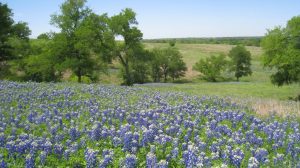 Spring is one of the best times of year to be a landowner in the Hill Country. The songbirds are singing, the wildlife flowers are blooming and the weather is gorgeous. It is also a great time to get out on your property before the summer heat hits and check off one or two of your Wildlife Management activities for the year. As you can see there is a lot to choose from!
Spring is one of the best times of year to be a landowner in the Hill Country. The songbirds are singing, the wildlife flowers are blooming and the weather is gorgeous. It is also a great time to get out on your property before the summer heat hits and check off one or two of your Wildlife Management activities for the year. As you can see there is a lot to choose from!
- Nest Boxes & Supplemental Shelter: Are your Nest Boxes ready for Spring Birds? If not, you need to clean them ASAP!
- Predator Control: IRFA – Predicted to be very active this spring after the recent rains Brown-headed cowbird trapping during breeding bird season
- Erosion Control
- Supplemental Water
- Spring Census Breeding Bird Survey (BBS)
- Re-Seeding Native grasses
Back to TopBack to Top
Adventures in Wildlife Management: Nest Boxes
By Mark Gray, Senior Wildlife Biologist
One of the more common and rewarding wildlife management activities is the use of nest boxes for supplemental shelter. Carolina Wren, Carolina Chickadee, Black-crested Titmouse, Tufted Titmouse, Purple Martin and Eastern Bluebird are local, cavity-nesting songbird species that utilize nest boxes for additional shelter and nesting. But nest boxes are not limited to songbirds. It is not uncommon to also find non-target species like ringtails, snakes, squirrels, and amphibians nesting in these boxes. Whatever the species is that you are managing for, the practice of monitoring and cleaning out nest boxes can be rewarding and adventurous at the same time.
The Wow Factor
The most exciting factor of checking nest boxes is the “what will you find” aspect of opening any box. Whether it’s finding tiny blue eggs inside a bluebird nest box, observing squawking babies in a nest, or seeing ducklings emerge from the nest box, these are all amongst the greater rewards for monitoring nest boxes. Knowing that you have provided a structure that aided in the continuation of that species is also pretty amazing. Regardless of how many times I’ve seen it, having an Eastern Screech-Owl perched in the window of a box is an especially rewarding aspect of my job.
The Unexpected Can Also Be Exciting
Ideally, you would always have the experience of finding evidence that each box is being used by the target birds you are managing for. Sometimes, you will be surprised to find some really interesting non-target species that utilize nest boxes as shelter. Some of the species that we have encountered over the years range from ringtails, bats, mice, flying squirrels (in our eastern counties), squirrels, lizards, snakes, and even amphibians. Unfortunately, there is also the possibility that bees or wasps may have used the box, and we’ve even seen a box covered by a mass of ants.
SLIDE SHOW 2
What’s the Best Nest Box Solution for Your Land?
Providing supplemental shelter for cavity-nesting species is an excellent and often rewarding wildlife management practice. Providing cavities can be done through a combination of nest boxes, or creating and maintaining snags (dead trees) on your property. Plateau installed more than 1,700 nest boxes on properties throughout Texas in 2012. We offer a variety of species-specific nest boxes ranging from wrens, to owls, to ducks (to see our full line of nest boxes, CLICK HERE). Please contact us if we can help you decide which nest box(es) best fit(s) your needs.
Until Next Time…
Next Seasons in Adventures in Wildlife Management, we will highlight the use of game cameras in surveying game and non-game species. We would love to include any exciting pictures that landowners themselves have pulled from their own game cameras. If you have any photos that you would like to see featured in the next issue of Seasons, please send them to [email protected].
Back to TopBack to Top
Video Featuring Kasey Mock on Supplemental Feeding White-Tailed Deer
By Kasey Mock, Account Manager, West Service Region
Ecological systems throughout Texas have experienced dramatic changes over the past 200 years. As landscapes have been altered and become progressively more fragmented, so have food resources. The effects of habitat degradation, fragmentation, and competition are compounded during extended periods of drought, like what Texas is currently experiencing, resulting in cumulative stress on all forms of wildlife. This makes the need for supplemental food all the more important. In this video Kasey Mock, Account Manager for Plateau Land & Wildlife presents some basic tips on providing supplemental feed for your white-tailed deer during the spring in Texas.
Plateau products stand above the competition. Texas made and built to last, our products are designed to attract more wildlife to your land and keep you in compliance with the CAD.
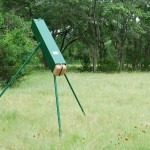
Protein Block Feeder
Help increase the quantity and quality of deer on your land by putting nourishing protein where it belongs — readily accessible to deer and out of the reach of destructive feral hogs! If you’re tired of spending money to feed non-target animals with protein blocks on the ground, make the switch to the Plateau Protein Block Feeder.
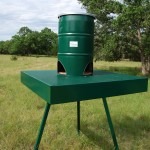
Platform Turkey Feeder
Allow turkey and other wild birds, including coveted songbirds, to flourish on your land with this durable and innovative feeder that stands above the competition. By utilizing a raised platform system, non-target animals, such as raccoons and feral hogs, are kept out of the feed barrel. This also provides the perfect perch for turkey and songbirds.
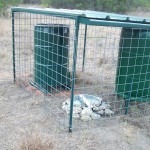
Quail and Small Wildlife Station
The Plateau Quail and Small Wildlife Station helps to attract, retain, and improve the bird and small wildlife population on your land with its smart design. Fully enclosed by 4″ x 4″ heavy gauge cattle panel, this system prevents non-target species, such as hogs and deer from consuming the food and water while also providing protection for smaller wildlife.
Back to TopBack to Top
Wildlife Management Activity Highlight: Predator Control
By Romey Swanson, Senior Plateau Biologist, San Antonio Office
Predators Play an Important Role in Maintaining a Healthy Wildlife Habitat
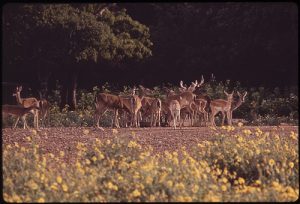 Within healthy habitats, native predators provide an essential function to complex ecological systems. Removal of key predators can have unintended, negative consequences. Predators play a contributory role in balancing prey density, which can contribute to improved species diversity and reduced habitat pressure.
Within healthy habitats, native predators provide an essential function to complex ecological systems. Removal of key predators can have unintended, negative consequences. Predators play a contributory role in balancing prey density, which can contribute to improved species diversity and reduced habitat pressure.
A familiar example is witnessed within the Texas Hill Country. As wolves and screw worms (among others) were eradicated in the second half of the 20th century, white-tailed deer populations began to sky-rocket to the point of becoming grossly over-abundant. This artificially high density has resulted in landscape scale habitat degradation from excessive use of preferred food resources (including trees, shrubs, vines, and forbs) by deer.
Predator Populations Can Also Become Out of Balance
Artificially high or even moderate densities of opportunistic predators can place significant pressures on naturally low-density or recovering wildlife populations. Where the underlying goal of a land manager is to increase or stabilize target wildlife populations, predator management can serve as an important activity contributing to the measurable success of a wildlife management plan.
How does predator control fit in my wildlife management plan?
Within any wildlife management plan, predator control should be justified as a complementary practice to help mitigate detrimental affects that could compromise broader wildlife and habitat management goals.
Predators come in many forms, but the most commonly managed species on private lands in Texas include:
Natives Predators:
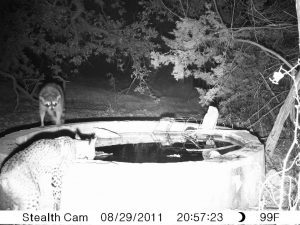
Check out that bobcat in the lower left corner! Photo courtesy of Plateau clients, Bill and Ann Edwards.
- coyotes
- bobcats
- raccoons
- skunks
- opossums
- cowbirds
- rat snakes
Non-native Predators:
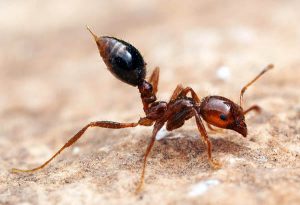
Imported Red Fire Ant (IRFA)
- feral hogs
- imported red fire ants
- starlings
- house sparrows
Concerning non-native predators, presence/infestation alone justifies control efforts. Non-native species prey both directly and indirectly on native wildlife resulting in an unnatural pressure to which native wildlife have not had an opportunity to adapt. Native predators present a more complex need for justification.
Top 3 Questions for Landowners Considering Predator Control
Land managers need to answer three important questions to justify reducing predator densities as part of a wildlife management plan.
- Do the predators I intend to control directly or indirectly prey on my target species?
- Do predators occur in a density that can result in a measurable negative impact to my target species? (This impact can be cumulative with environmental factors such as drought and other disturbances.) As an example: if I have a deer overpopulation problem, coyote predation on deer fawns may help me achieve my management goals
- Am I willing to engage in control of sufficient intensity and duration to make a real impact?
What qualifies as predator control?
Proper trapping, active hunting, and harvest-on-site efforts are appropriate activities associated with controlling most predators. Another predator management technique involves monitoring and treating imported red fire ant (IRFA) infestation. Although IRFA and cowbird control are the only predator management activities with specific minimum intensities to qualify, a good faith effort should be made and documented when performing any predator control activity.
What DOES NOT qualify as predator control?
- Controlling small varmints when the defined target species is deer
- Controlling raccoons because they consume deer feed
- Undocumented trapping efforts
- Undocumented hunting efforts
What is Plateau’s Predator Control solution?
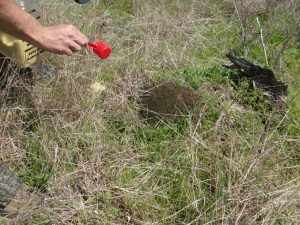
Plateau Field Technician applying dual-action insecticide including Insect Growth Regulator to sterilize the queen.
Imported Red Fire Ant Treatment (IRFA): Armed with the latest aerial imagery, GPS units, and a highly effective dual-action insecticide including Insect Growth Regulator to sterilize the queen, or organic Spinosad insecticide, Plateau’s field technicians have the tools to fight back against this invasive pest. Preventing or reducing the infestation of imported red fire ants will improve reproductive success, decrease direct predation and reduce indirect competition for food sources with native wildlife. Broadcast treatments may be a better alternative where livestock are not grazed. Plateau recommends treating in late spring / early summer and again in the fall, so now is a great time for your first treatment of the year.
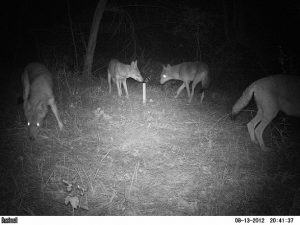
Coyotes caught on Plateau’s infrared cameras at one of the scent-bait stations.
Camera Surveys: Monitoring predator populations is just as important as controlling them. Inferences can be made as to the relative abundance of predators on your property, but camera survey data is a more useful tool in determining when trapping/hunting efforts should be intensified or relaxed. They can also justify controlling a species that is otherwise an important member of a natural ecosystem. Plateau offers a Remote Camera Mammal Survey that monitors secretive mammal species that would otherwise be difficult to observe.
A Plateau biologist will establish and monitor scent-baited stations for 14 consecutive nights and the data is recorded by infrared cameras. Data will then be analyzed in a detailed report including maps and photos.
Give us a call today if you’re interested in learning more about how Predator Control can benefit your land and wildlife management goals specifically.
Back to TopBack to Top
2 TWA Radio Interviews with Gary Joiner Featuring Craig Bowen
By Erica Fick, Marketing Coordinator
Interview 1: Craig explains how Plateau helps private Texas landowners, both seasoned and new, transition their land to Wildlife Management Tax Valuation, and maintain this favorable property tax valuation by providing turn-key wildlife products and services in the private market.
Interview 2: Craig describes how the prolonged drought has forced many small acreage landowners with cattle operations to transition to Wildlife Management Valuation, a tough choice for many, but a saving grace for those that discover Plateau as a partner in helping them make that tough transition. He also touches briefly on how the new breed of Texas landowner is changing the traditionally agricultural landscape to one that’s focused more on managing land for wildlife.
Back to TopBack to Top
Know Your Risk, Save Your Land
By Allison Elder, Attorney and Counselor, Braun & Gresham, PLLC
 Today’s owner of rural land has many potential risks to consider. As friends, family, and other guests enjoy your land for recreational activities such as hunting, swimming, and off-road adventures, you could be putting yourself and your property at risk. In addition, without a plan to manage risk, your property could be exposed to creditor’s claims brought about by a bad business debt, a medical emergency, a negligent injury to others, a divorce, a bankruptcy, or numerous other personal or business crises. With proper precautions and smart risk management in place, you can minimize the risk of forced liquidation of family land or the loss of other major assets.
Today’s owner of rural land has many potential risks to consider. As friends, family, and other guests enjoy your land for recreational activities such as hunting, swimming, and off-road adventures, you could be putting yourself and your property at risk. In addition, without a plan to manage risk, your property could be exposed to creditor’s claims brought about by a bad business debt, a medical emergency, a negligent injury to others, a divorce, a bankruptcy, or numerous other personal or business crises. With proper precautions and smart risk management in place, you can minimize the risk of forced liquidation of family land or the loss of other major assets.
Braun & Gresham can help manage the risk of losing your assets, even your land, with risk evaluations, recommended policies and procedures, and strategic legal protections. To manage your risk, you must first know and claim your rights.
Protect Your Assets
To avoid the liability associated with unintended accidents or unresolved debts, every landowner should have a comprehensive risk management plan in place that uses multiple strategies to surround you and your family with protection . A risk management plan enables landowners to identify and assess problems, and to reduce the probability and exposure to risks specific to their land use. In addition, having a risk management program in place allows a landowner to feel more comfortable with inviting guests onto her property and decreases the likelihood of an accident or injury on the land. It can also protect your land from other personal and business creditors, by segregating your assets and your potential liabilities into separate and distinct ownership entities.
The Braun & Gresham Comprehensive Risk Management Plan
Unfortunately, there’s no silver bullet for protecting all your assets all the time. You have to build a wall against liability, one brick at a time. There are statutory protections for landowners, but there are certain actions that you must take to reap the full benefits of the law. Having a strong, multi-layered risk management plan in place is the best way protect yourself.
The following is a list of key mechanisms Braun & Gresham uses to minimize risk and to protect our clients and their assets, especially their rural land (the “Ranch”):
- CREATION AND MAINTENANCE OF A BUSINESS ENTITY
- QUALIFYING FOR STATUTORY PROTECTIONS
- QUALIFYING UNDER TEXAS HOMESTEAD LAW
- DEVELOPING EFFECTIVE WAIVERS
- PROVIDING QUALIFIED SIGNAGE
- DEVELOPING LEASE AGREEMENTS
- TRAINING, INSTRUCTION, PRACTICES AND PROTOCOLS
- REVIEW OF FEES CHARGED IN OPERATIONS
- INSURANCE REVIEW
- IDENTIFYING AND MITIGATING POTENTIAL HAZARDS
- INSPECTION RECOMMENDATIONS
Not every landowner may need all of these tools, but a free 30-minute initial consultation with one of our attorneys should allow us to begin matching your needs with the appropriate legal mechanism(s). The peace of mind a well-developed risk management plan can bring you, and the numerous problems that it can solve is worth the effort and cost to protect your precious land.
If you are interested in learning more about how Risk Management can help protect your land and other assets, attend our webinar next Thursday, March 28th from 12-1pm with Plateau CEO, David Braun. CLICK HERE to learn more about this event and to RSVP.
 Allison oversees the risk management practice for the firm, guiding landowners on the judicious use of a variety of tools designed to reduce the risk of owning rural land, including the use of business entities, statutory protections, and comprehensive leases and waivers. She also provides estate and disability planning services at the firm. To learn more about Allison, visit her bio page.
Allison oversees the risk management practice for the firm, guiding landowners on the judicious use of a variety of tools designed to reduce the risk of owning rural land, including the use of business entities, statutory protections, and comprehensive leases and waivers. She also provides estate and disability planning services at the firm. To learn more about Allison, visit her bio page.
Get to Know Plateau
By Kameron Bain, Business Development
Over the past couple of months we have added some new faces to our growing team. In this special edition of “Get to Know Plateau,” we give a brief introduction to Julie Mitchell, Trenton Meyer, and Hope Bolton. Though these introductions are short, we will be getting to know them better in upcoming Seasons where we’ll highlight longer features on each of them.
Julie Mitchell
 Julie Mitchell started in December as an Administrative Assistant but in just a few months she was promoted to Human Resources Manager. Julie has a MBA from Oklahoma City University, and before moving to Austin she managed a law firm for nine years. Julie’s excited to be working with our team and standing behind the Plateau mission. “I enjoy working with people who truly enjoy and believe in what they are doing and who believe in helping others. I feel that helping landowners to preserve their land for the future is a very important cause to support and I am happy to a part of Plateau’s mission to do that.”
Julie Mitchell started in December as an Administrative Assistant but in just a few months she was promoted to Human Resources Manager. Julie has a MBA from Oklahoma City University, and before moving to Austin she managed a law firm for nine years. Julie’s excited to be working with our team and standing behind the Plateau mission. “I enjoy working with people who truly enjoy and believe in what they are doing and who believe in helping others. I feel that helping landowners to preserve their land for the future is a very important cause to support and I am happy to a part of Plateau’s mission to do that.”
Trenton Meyer
 Trenton Meyer is our first Wildlife Services Field Technician and Biologist Administrative Assistant in our new San Antonio office. He is a recent graduate from Texas A&M University with a Bachelor of Science in Wildlife and Fisheries Sciences. He previously worked at Lossen Whitetails as the Assistant Manager breeding white-tailed deer. Trenton’s passion for the outdoors and Texas makes him perfect for his new role. “What I like about Plateau is being able to work outside and help improve the quality of Texas ecosystems to improve wildlife habitat around the state.”
Trenton Meyer is our first Wildlife Services Field Technician and Biologist Administrative Assistant in our new San Antonio office. He is a recent graduate from Texas A&M University with a Bachelor of Science in Wildlife and Fisheries Sciences. He previously worked at Lossen Whitetails as the Assistant Manager breeding white-tailed deer. Trenton’s passion for the outdoors and Texas makes him perfect for his new role. “What I like about Plateau is being able to work outside and help improve the quality of Texas ecosystems to improve wildlife habitat around the state.”

Hope Bolton
Hope Bolton is the Administrative Assistant supporting the Sales & Marketing team. She was born and raised in Dripping Springs on her family’s farm and goat dairy called Pure Luck Farm and Dairy. Hope recently graduated from St. Edwards University with a degree in Communication specializing in Public Relations and Advertising. Plateau’s mission is what drew Hope to work on our team. “I like working at Plateau because I feel I am helping to protect and conserve our natural resources in Central Texas.”
Back to TopBack to Top







Sorry, the comment form is closed at this time.